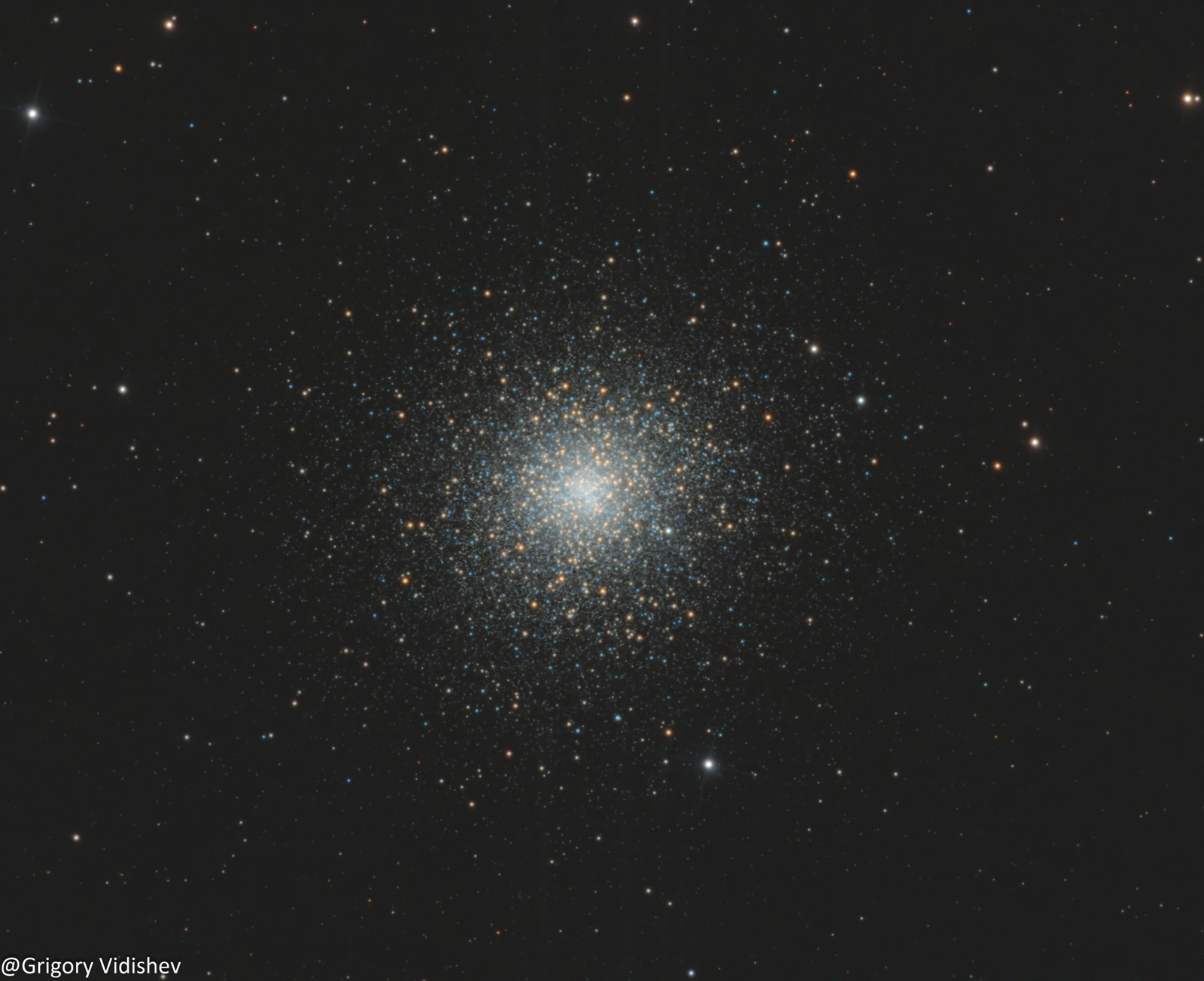

M2 Globular Star Cluster
| Description |
Messier 2, or M2 (also designated NGC 7089), is a globular cluster in the constellation Aquarius, five degrees north of the star Beta Aquarii. It was discovered by Jean-Dominique Maraldi in 1746 and is one of the largest known globular clusters. Discovery and visibility M2 is, under excellent conditions, just visible to the naked eye. Binoculars or a small telescope will identify this cluster as non-stellar, while larger telescopes will resolve individual stars, of which the brightest are of apparent magnitude 6.5. |
|---|---|
| Data/Processing Attribution |
This is my data and processing. |
| Distances/Size |
Distance to the object: 55,000 light-years. |
| Equipment |
Mount-PlaneWave L-350; Scope-PlaneWave CDK14″, 356 mm aperture, 2563 mm focal length; Camera-Moravian C3-61000, 0.30 arcsec/pixel. |
| Observatory |
The image was captured at the Prairie Skies Astro remote observatory. |
| Exposure |
The total exposure using RGB filters is 1 hour and 21 minutes, with each sub-exposure lasting 90 seconds.
RGB Filters for stars R- 24X90= 36 minutes G-18X90= 27 minutes B-18X90= 18 minutes Processing is done in PixInsight, Photoshop, and Lightroom Classic |
